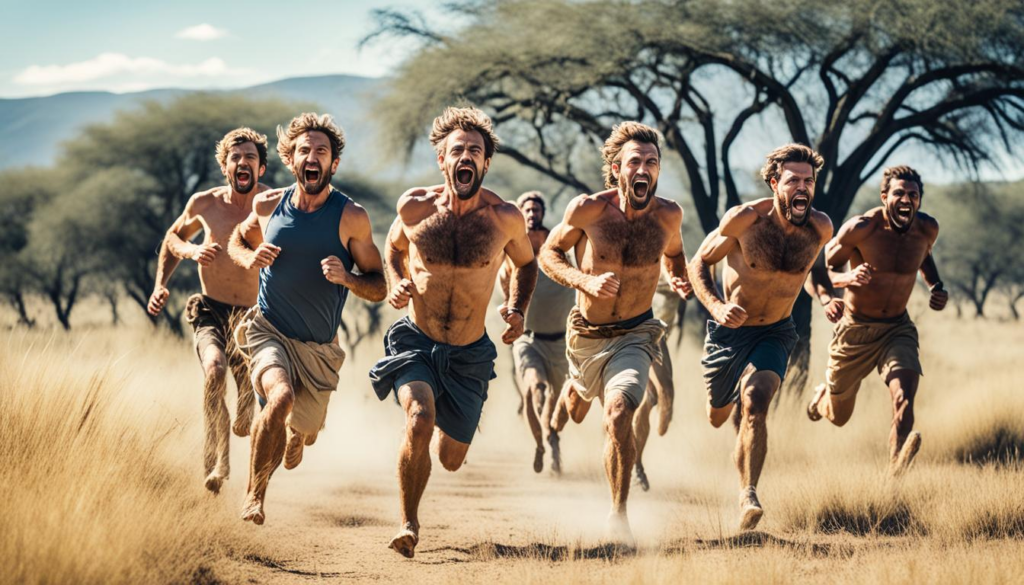
when was running invented – Running is a fundamental human activity that has been part of our lives for thousands of years. But have you ever stopped to wonder when running was “invented”? Unlike tools or technologies that can be pinpointed to a specific date, running is an innate ability that has evolved alongside humanity. In this article, we’ll explore the history of running, from our prehistoric ancestors to modern-day athletes, shedding light on the significance of this simple yet profound activity.
The Evolution of Running in Human History
The Origins of Human Movement
To understand when running was invented, we must first look at the evolution of human movement. Early hominins, dating back millions of years, relied on walking and running for survival. As they evolved, their bodies adapted for efficient locomotion. The development of longer legs, an upright posture, and a flexible spine made running a crucial skill for early humans.
Archaeological findings suggest that early humans hunted and gathered in small groups, often relying on endurance running to pursue prey over long distances. This form of “persistence hunting” required not just speed but also stamina and strategy. Evidence indicates that hominins like Homo erectus could run for hours, making them effective hunters in the open savannahs.
Cultural Significance of Running
As societies began to form, running took on new meanings. It wasn’t just a means of survival; it became a part of cultural practices and traditions. Various ancient civilizations recognized the importance of running. For example, in ancient Greece, running was celebrated as a physical activity that showcased strength and agility. The Olympic Games, which began in 776 BC, featured running events that highlighted the skills of the athletes. This cultural appreciation for running laid the foundation for its significance in human history.
In addition, many indigenous cultures have incorporated running into their rituals and ceremonies. From the Native American tribes who used running as a form of communication and celebration to the ancient Aztecs who performed running rituals as offerings to their gods, the act of running became intertwined with spiritual and social aspects of life.

The Development of Running as a Sport
Early Competitions and Events
when was running invented – As civilizations progressed, the idea of running as a competitive sport gained traction. The first documented footrace occurred in ancient Greece during the Olympic Games. The sprint event, known as the “stade,” consisted of a short dash from one end of the stadium to the other, covering a distance of roughly 192 meters. This race was so significant that it marked the beginning of organized athletic competitions, where running took centre stage.
Following the Greeks, the Romans also embraced running as a sport. They organized races in amphitheatres, incorporating both speed and endurance events into their entertainment offerings. Running became a spectacle, drawing large crowds and showcasing the prowess of the athletes. The popularity of these events laid the groundwork for future running competitions and influenced how we perceive the sport today.
The Rise of Modern Running Events
Fast forward to the 19th century, and running began to transform into the organized sport we know today. The establishment of running clubs and associations marked a new era. In 1866, the first modern marathon took place in England, inspired by the ancient Greek legend of Pheidippides, who supposedly ran from Marathon to Athens. This event not only revived interest in long-distance running but also established the marathon as a staple in athletic culture.
The late 19th and early 20th centuries saw the emergence of various running events, from sprints to long-distance races. Track and field became a popular arena for athletes to showcase their talents, and the establishment of the International Association of Athletics Federations (IAAF) in 1912 provided a formal structure for competitive running worldwide.
Running in the Modern Era
The Evolution of Running Shoes and Technology
As running gained popularity, the technology surrounding it also evolved. The introduction of specialized running shoes in the mid-20th century revolutionized the sport. Pioneers like Bill Bowerman, co-founder of Nike, designed shoes that provided better support and cushioning for runners. This development not only enhanced performance but also reduced the risk of injuries, making running more accessible to the masses.
The late 20th century brought advancements in training methods and sports science. Runners began to understand the importance of nutrition, recovery, and mental preparation. This holistic approach transformed how athletes prepared for competitions, leading to improved performances and record-breaking.
The Global Running Community
Today, running is more than just a sport; it’s a global movement. From local 5Ks to prestigious marathons like Boston and New York, running events draw millions of participants and spectators each year. Social media has further fueled the running community, allowing individuals to share their journeys, achievements, and tips. Running clubs and online platforms have made it easier for people of all ages and skill levels to connect and inspire one another.
Moreover, the rise of running events for charitable causes has added a layer of purpose to the activity. Runners often participate in races to raise funds and awareness for various issues, showing that running can be a powerful vehicle for positive change.
Conclusion: The Timelessness of Running
So, when was running invented? The answer is not straightforward, as running itself is an intrinsic part of being human. From our earliest ancestors who relied on running for survival to the modern-day athletes who push the boundaries of speed and endurance, running has been an integral part of our existence.
The evolution of running reflects broader societal changes, highlighting its significance in culture, competition, and community. Whether you run for fun, fitness, or competition, you’re participating in a timeless activity that connects us to our past and inspires future generations. As we lace up our shoes and hit the pavement, we embrace not just a sport but a shared human experience that transcends time and place.





